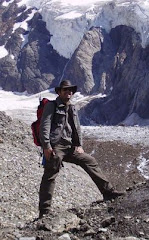The site of Bilzingsleben is located on the northern bordere of the Thruringian basin, today on a small mound in the middle of pastures, fields and villages.
370.000 years ago in contrast it was the bottom of a valley with springs located on the border of the slopes, feeding creeks that flowed in a lake. Only thousand of years of erosion have switched the topography, eroding softer rocks and letting over only hard lithologies, like the calcareous tufas that remain from this past world.
Fossils of the interglacial period of the Holsteinian can found principally in tufa sands, deposited originally on an alluvial fan and the shore of the ancient lake. This deposition is extremely rich on bones of mammals, and as distinctive feature skull fragments, teeth’s and stone tools of Homo erectus.
370.000 years ago in contrast it was the bottom of a valley with springs located on the border of the slopes, feeding creeks that flowed in a lake. Only thousand of years of erosion have switched the topography, eroding softer rocks and letting over only hard lithologies, like the calcareous tufas that remain from this past world.
Fossils of the interglacial period of the Holsteinian can found principally in tufa sands, deposited originally on an alluvial fan and the shore of the ancient lake. This deposition is extremely rich on bones of mammals, and as distinctive feature skull fragments, teeth’s and stone tools of Homo erectus.



The incredible concentration of bones seduced some authors to interpret this site as hunt and butcher-place of the early man. They also saw in the accumulation of stones and bones signs of “fundaments” of huts – at least three of them. But this interpretation is not widely accepted, new excavations and observations on the site showed that the “fundaments” and the “flagged floor” are distributed in a range of 1m of the geologic column, not on a single horizon. Also the position of bones, attribute to human butchering, is straight north-south trending, a clue that provides more for fluvial, rather than anthropogenic induced orientation.
This reinterpretation has maybe also important repercussions on the theory of early man as great hunter, forcing the pleistocene megafauna to extinction.
 Silex - artefact from the site of Ehringsdorf (ca. 200.000y) by (presumably by Homo neanderthalensis), showing that central Europe was inhabitat by man for more then 400.000 years.
Silex - artefact from the site of Ehringsdorf (ca. 200.000y) by (presumably by Homo neanderthalensis), showing that central Europe was inhabitat by man for more then 400.000 years.




Keine Kommentare:
Kommentar veröffentlichen